Darwin's Study
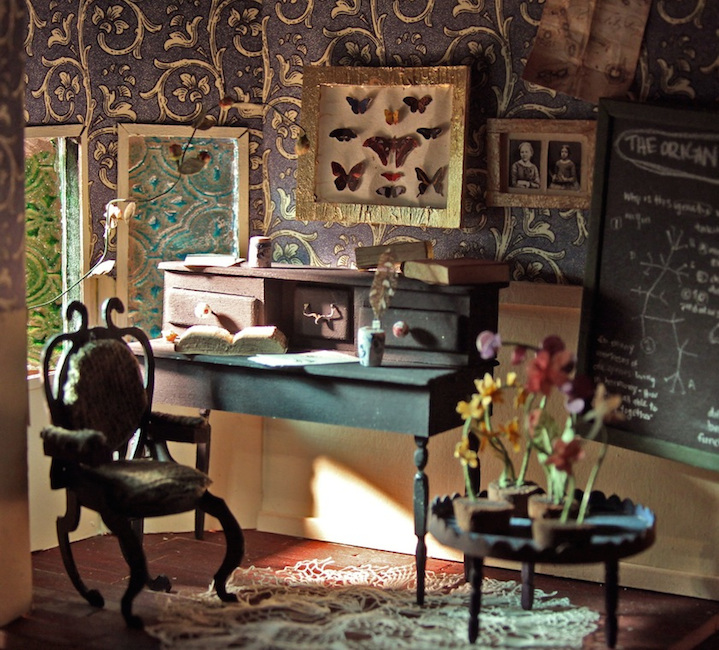
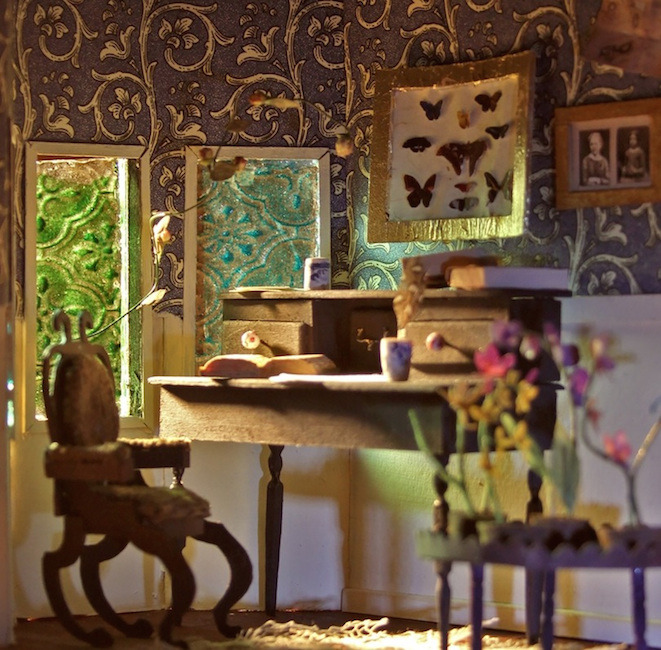
This small scale model is my interpretation of what Naturalist Charles Darwin's study could have looked like.
The furniture is inspired by English 1840-1870 style, the time period in which Darwin would have been in the prime of his research Darwin: 1809-1882).
The pinned butterflies represent his fascination with the diversity within species, believing that a large population diversity would prove to be more productive than what one species could accomplish on its own. This theory remains largely unchanged today. The flowers represent the same concept of species diversity, but are all different types of orchids, which Darwin studied at length, even producing the book, Fertilisation of Orchids, in 1862.
The portraits are two of Darwin's children, all of whom he loved dearly. Shown are Heniretta (Etty) and Anne. Anne died was Charles Darwin's second child and first daughter, but she passed away at the age of ten (1851), a toll which shook Darwin's faith in Christianity.
The book by Charles Lyell, Principles of Geology (1830), is credited by Darwin to be one of the books which inspired him to follow the path of the sciences.
Shown on the chalkboard are notes which connect back to Darwin's most famous book, On the Origin of Species (1859). Images include bird beak diversity, an orchid with a design that Darwin hypothesized required a bug with an inordinately long tongue in order to pollinate (proven hundreds of years later to be true), and the "Tree of Life" which is taken from Darwin's notebooks during his Galapagos travels.
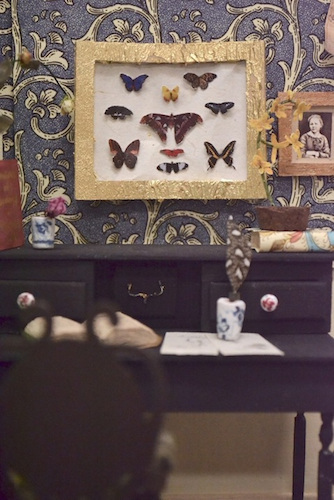
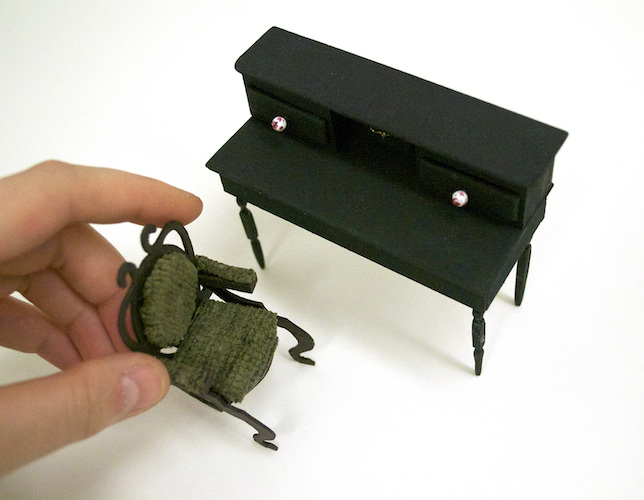
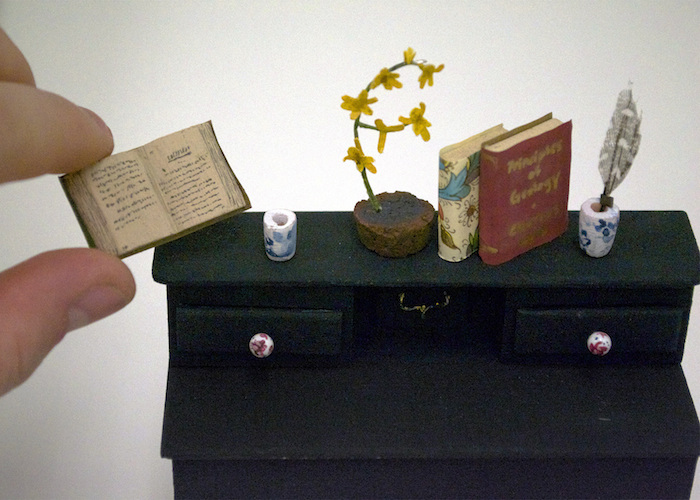
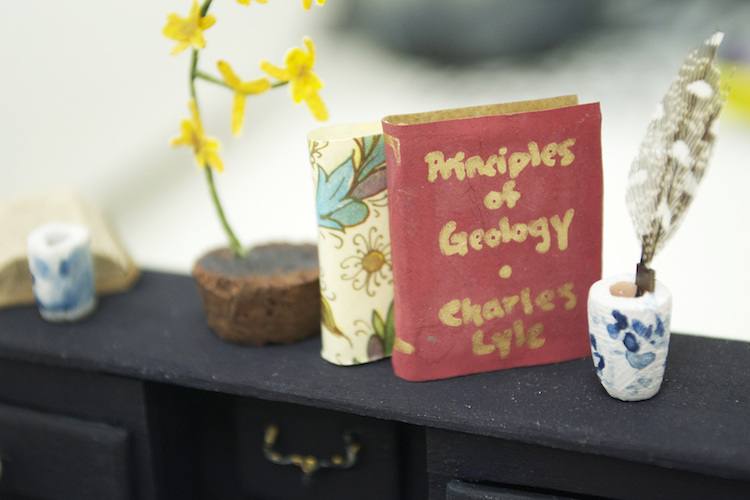
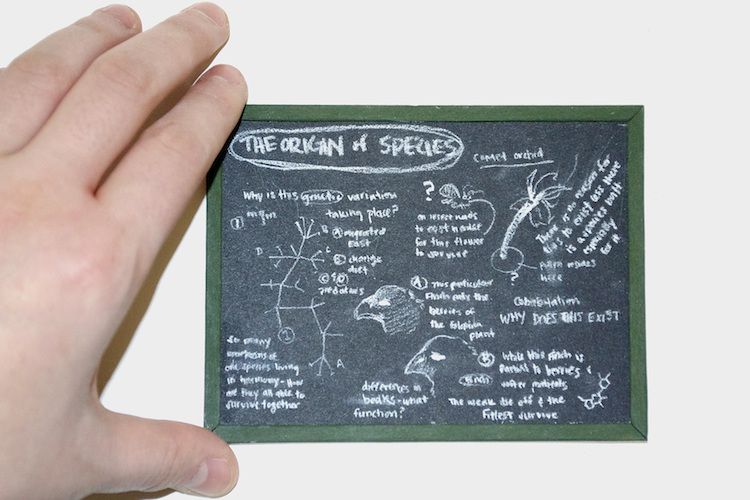
Balsa wood, paper, glass, Scuply, wire, acrylic paint